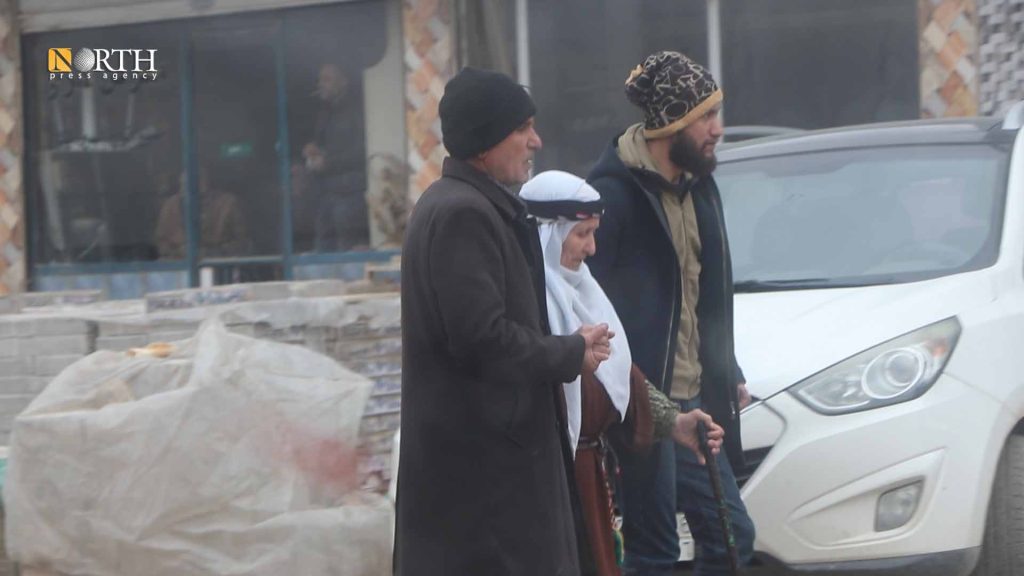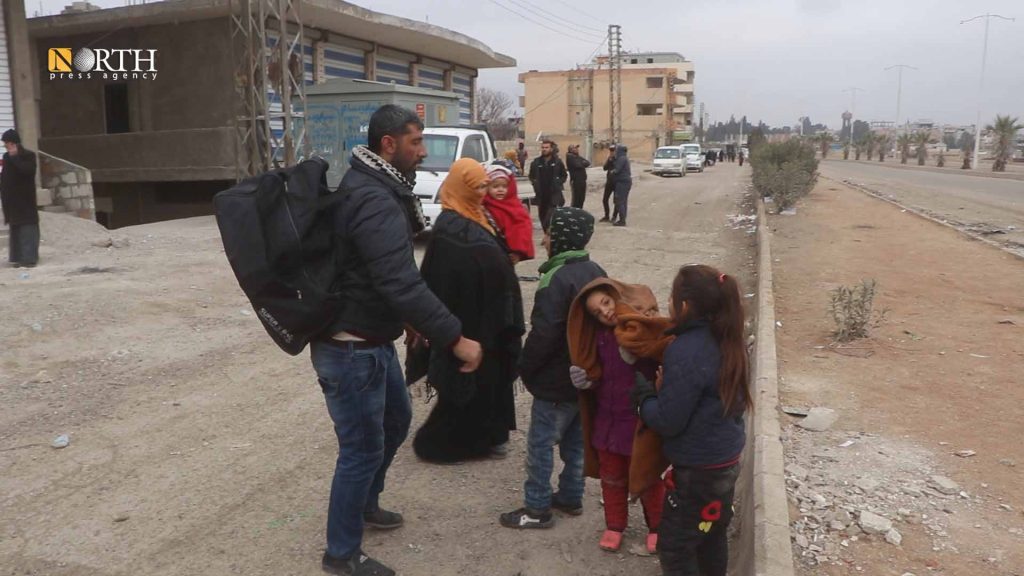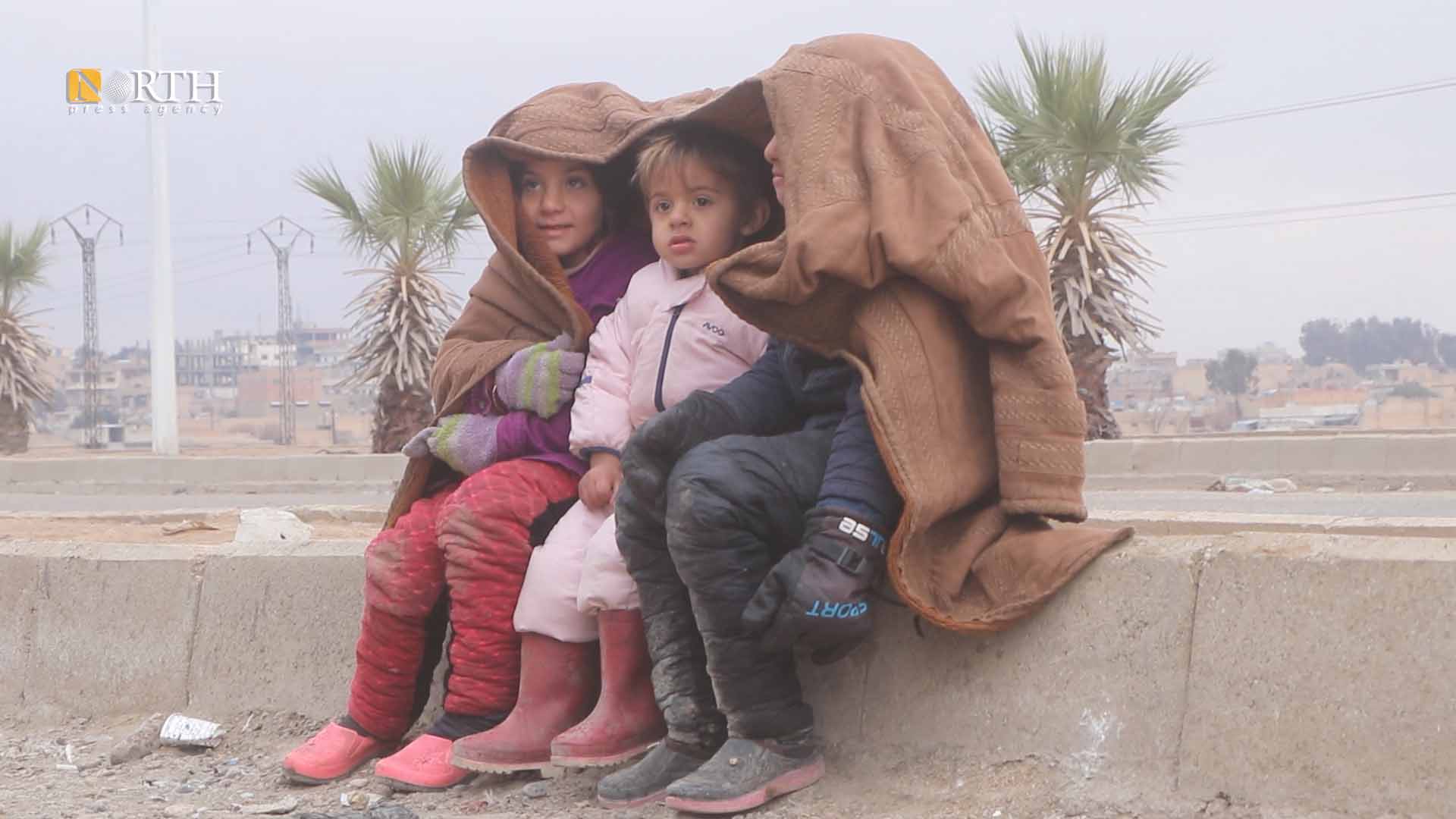HASAKAH, Syria (North Press) – Salem al-Saleh, an IDP of Sere Kaniye (Ras al-Ain) city, has been moving with his family among the houses of his relatives in the city of Hasakah, since the attack of the Islamic State (ISIS) sleeper cells on al-Sina’a prison in the Guweiran neighborhood, south of Hasakah.
Al-Saleh wants to return to his permanent sheltering room in a school in the Guweiran neighborhood, which has become a home for his family of six for more than two years after fleeing Turkish attacks in Sere Kaniye, but his fears about the presence of ISIS cells and detainees fleeing from prison in the neighborhood prevent him from risking that.

Al-Saleh is anxiously awaiting the announcement of the end of the combing campaign in the neighborhoods of Hasakah to return to school.
He had been displaced from his hometown after the Turkish military operation, accompanied by the Turkish-backed armed opposition factions, against his area in October 2019, and settled in a school in Guweiran neighborhood.
On January 20, ISIS sleeper cells carried out a series of attacks on al-Sina’a prison, where thousands of ISIS members are detained, to break their ISIS inmates fellows out of the prison, as part of them are hiding within the residential areas, al-Saleh and all the IDPs in the shelter center left the school and headed to other neighborhoods.
On that day, Hasakah witnessed clashes between the Syrian Democratic Forces (SDF) and the Internal Security Forces (Asayish) supported by the Global Coalition on one hand, and ISIS cells on the other in the vicinity of al-Sina’a prison in Guweiran neighborhood, following three explosions in an attempt to escape the prisoners.
The deterioration of the security situation and the spread of ISIS cells and prisoners fleeing from al-Sina’a prison among the populated neighborhoods caused a mass exodus of residents of the neighborhoods of Guweiran, al-Zohour, al-Nashwa, and Villat al-Hamr to the central and northern neighborhoods of Hasakah.
Return is a risk
Sheikhmous Ahmad, head of the Office of IDPs and Refugees in the Autonomous Administration of North and East Syria (AANES) said that a part of the displaced are distributed in two centers, namely Musa’b Bin Omair mosque in Tel Hajar and Mustafa mosque in the eastern neighborhoods of the city.
There are about 225 families, about 1,000 people, in these two centers, while others have stayed with their relatives in the northern and western neighborhoods of the city, according to Ahmad.
The number of residents who displaced from Guweiran neighborhood and Hosh al-Ba’er does not exceed 5,000 people, because of the presence of large numbers of them in their homes and the areas adjacent to the two neighborhoods, Ahmad added.
The claims of the presence of 45,000 displaced people aren’t true, he noted.
On January 26, the SDF announced the full control over al-Sina’a prison.
Amid the ongoing combing operation and the pursuit of ISIS members in residential neighborhoods, some families from Guweiran returned to their homes, while most of the residents do not risk returning, amid fears that ISIS members are in their homes.
Hundreds of ISIS cells and inmates were arrested in Hasakah’s neighborhoods during combing operations, the SDF military official said yesterday.
Al-Saleh, works as a motorbike driver, living situation is getting difficult because he can’t work due to the ongoing clashes between the SDF and ISIS members, and the imposition of a total curfew in Hasakah.
Al-Saleh didn’t receive any humanitarian aid, which would relieve his family’s suffering in the very cold weather conditions.
“We hope this situation will end as soon as possible,” he added.
Hard times
A day after the ISIS attack on the prison, the General Command of the Asayish imposed a complete curfew in the city of Hasakah, and a ban on movements.
The Asayish said that the curfew will last until further notice, and called on residents to report any suspicious movement within the city.
Fahd al-Ali, a resident of Guweiran neighborhood, bread winner of a family of seven, said, “There were explosions and strikes near Guweiran garage and al-Sina’a prison. We fled with our families on foot.”
“There were many residents, including patients. We went to the house of one of our relatives. No organizations took care of us, in light of the intensification of the cold wave. We suffered a lot. There are no countries or organizations that provided assistance to us,” al-Ali said.
He is also afraid of returning to his home because of the spread of ISIS cells and inmates among the residential neighborhoods.

Al-Ali calls on the security forces to control the security situation.
“We want them to finish combing and eliminate those who fear nothing, we do not want more victims.”

